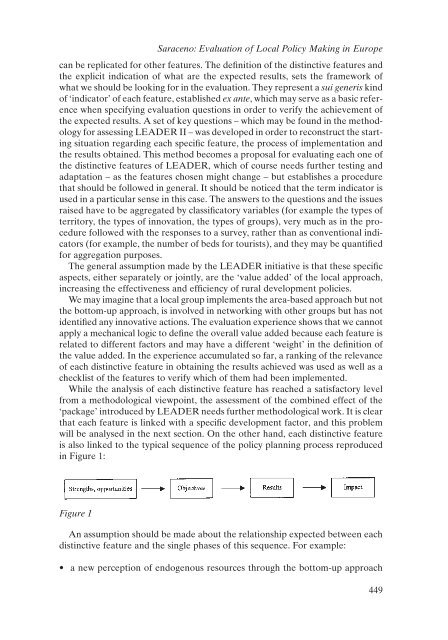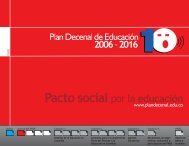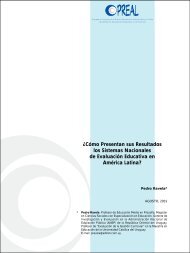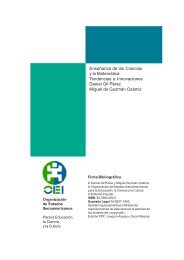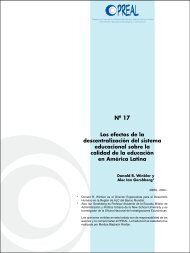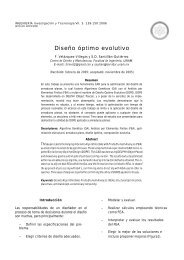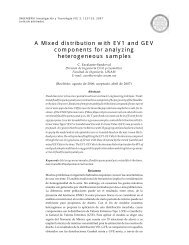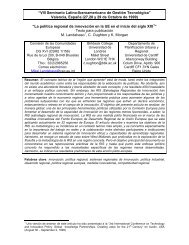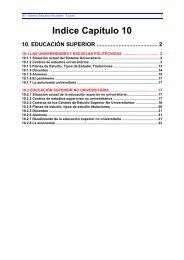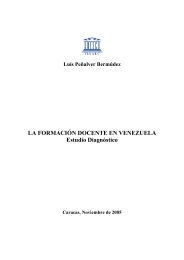The Evaluation of Local Policy Making in Europe - OEI
The Evaluation of Local Policy Making in Europe - OEI
The Evaluation of Local Policy Making in Europe - OEI
Create successful ePaper yourself
Turn your PDF publications into a flip-book with our unique Google optimized e-Paper software.
Saraceno: <strong>Evaluation</strong> <strong>of</strong> <strong>Local</strong> <strong>Policy</strong> <strong>Mak<strong>in</strong>g</strong> <strong>in</strong> <strong>Europe</strong><br />
can be replicated for other features. <strong>The</strong> def<strong>in</strong>ition <strong>of</strong> the dist<strong>in</strong>ctive features and<br />
the explicit <strong>in</strong>dication <strong>of</strong> what are the expected results, sets the framework <strong>of</strong><br />
what we should be look<strong>in</strong>g for <strong>in</strong> the evaluation. <strong>The</strong>y represent a sui generis k<strong>in</strong>d<br />
<strong>of</strong> ‘<strong>in</strong>dicator’ <strong>of</strong> each feature, established ex ante, which may serve as a basic reference<br />
when specify<strong>in</strong>g evaluation questions <strong>in</strong> order to verify the achievement <strong>of</strong><br />
the expected results. A set <strong>of</strong> key questions – which may be found <strong>in</strong> the methodology<br />
for assess<strong>in</strong>g LEADER II – was developed <strong>in</strong> order to reconstruct the start<strong>in</strong>g<br />
situation regard<strong>in</strong>g each specific feature, the process <strong>of</strong> implementation and<br />
the results obta<strong>in</strong>ed. This method becomes a proposal for evaluat<strong>in</strong>g each one <strong>of</strong><br />
the dist<strong>in</strong>ctive features <strong>of</strong> LEADER, which <strong>of</strong> course needs further test<strong>in</strong>g and<br />
adaptation – as the features chosen might change – but establishes a procedure<br />
that should be followed <strong>in</strong> general. It should be noticed that the term <strong>in</strong>dicator is<br />
used <strong>in</strong> a particular sense <strong>in</strong> this case. <strong>The</strong> answers to the questions and the issues<br />
raised have to be aggregated by classificatory variables (for example the types <strong>of</strong><br />
territory, the types <strong>of</strong> <strong>in</strong>novation, the types <strong>of</strong> groups), very much as <strong>in</strong> the procedure<br />
followed with the responses to a survey, rather than as conventional <strong>in</strong>dicators<br />
(for example, the number <strong>of</strong> beds for tourists), and they may be quantified<br />
for aggregation purposes.<br />
<strong>The</strong> general assumption made by the LEADER <strong>in</strong>itiative is that these specific<br />
aspects, either separately or jo<strong>in</strong>tly, are the ‘value added’ <strong>of</strong> the local approach,<br />
<strong>in</strong>creas<strong>in</strong>g the effectiveness and efficiency <strong>of</strong> rural development policies.<br />
We may imag<strong>in</strong>e that a local group implements the area-based approach but not<br />
the bottom-up approach, is <strong>in</strong>volved <strong>in</strong> network<strong>in</strong>g with other groups but has not<br />
identified any <strong>in</strong>novative actions. <strong>The</strong> evaluation experience shows that we cannot<br />
apply a mechanical logic to def<strong>in</strong>e the overall value added because each feature is<br />
related to different factors and may have a different ‘weight’ <strong>in</strong> the def<strong>in</strong>ition <strong>of</strong><br />
the value added. In the experience accumulated so far, a rank<strong>in</strong>g <strong>of</strong> the relevance<br />
<strong>of</strong> each dist<strong>in</strong>ctive feature <strong>in</strong> obta<strong>in</strong><strong>in</strong>g the results achieved was used as well as a<br />
checklist <strong>of</strong> the features to verify which <strong>of</strong> them had been implemented.<br />
While the analysis <strong>of</strong> each dist<strong>in</strong>ctive feature has reached a satisfactory level<br />
from a methodological viewpo<strong>in</strong>t, the assessment <strong>of</strong> the comb<strong>in</strong>ed effect <strong>of</strong> the<br />
‘package’ <strong>in</strong>troduced by LEADER needs further methodological work. It is clear<br />
that each feature is l<strong>in</strong>ked with a specific development factor, and this problem<br />
will be analysed <strong>in</strong> the next section. On the other hand, each dist<strong>in</strong>ctive feature<br />
is also l<strong>in</strong>ked to the typical sequence <strong>of</strong> the policy plann<strong>in</strong>g process reproduced<br />
<strong>in</strong> Figure 1:<br />
Figure 1<br />
An assumption should be made about the relationship expected between each<br />
dist<strong>in</strong>ctive feature and the s<strong>in</strong>gle phases <strong>of</strong> this sequence. For example:<br />
• a new perception <strong>of</strong> endogenous resources through the bottom-up approach<br />
449


